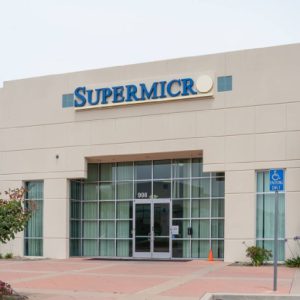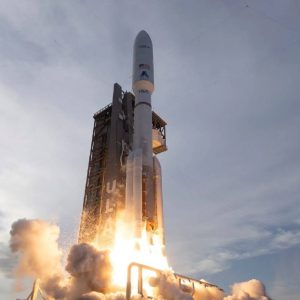General opinion in the Spanish computer press says that Spain must look to software for a future in the computer business. Indeed, the vast majority of operations within Spanish computer companies are in software applications with some, Centro de Calculo de Sabadell Group, Logic Control SA and Telefonica de Espana SA’s Entel SA, for example, even mingling high up with the multinationals in overall rankings. Nevertheless, APD Holding SA or the Spanish IT Company as it calls itself, and Investronica SA are two Spanish companies that actually seem to have a toe in the door of the hardware market. Of APD’s $52.4m total turnover for 1989, $34.7m comes from hardware sales: 70% microcomputers, 15% peripherals, 10% data communications and 5% high end business minicomputers – the last of these being an area that the company has recently entered with its 400 series.
Parallel
Although APD imports components, the company designs and manufactures all its products at its Madrid factory, which has an annual production capacity of 5,000 units. APD’s hardware products include conventional workstations as well as Single Instruction Multiple Data – SIMD – workstations. It is currently developing low cost supercomputers and a parallelised operating system. In addition, the company was one of the driving forces behind Aentec, the Spanish Association of New Technologies, as its chairman is currently APD general manager Eloy Gomez. The company’s designs have been taken up in European projects such as Eureka 228 and RACE. Thanks to this leading edge technology, APD’s exports have grown to 10% of its revenue. The company exports to Portugal, Switzerland, the Benelux countries and France and is negotiating for outlets in North Africa. It also has an office in Argentina. Within Spain, the company has joint engineering and development projects with the Spanish Ministry of Industry & Energy promoting the Spanish high-tech industry, and it collaborates with the data processing faculties at universities in Madrid and Barcelona for various European projects. The faculty in Madrid even has a dedicated APD laboratory for joint research and development projects.
All over Europe, the lights are going out at the dwindling number of plants that manufacture computers and peripherals many later lighting up again with an American or Japanese hand operating the master switch. Spain may be seen as having less to mourn than most, because even in the early days of the industry, Spanish national computer manufacturers were hard to find. Nevertheless, while all the pundits insist that if Spain’s national computer industry has a future at all, it lies in software development, a handful of computer manufacturers are doggedly ploughing on and building machines they have designed themselves. Louise Jorgensen reports.
APD’s software, services and maintenance operations during 1989 amounted to $13m. That year the company had 300 employees, grew 54% and hopes soon to confirm turnover of $68m for 1990. It sells 40% directly and 60% through indirect channels, while its turnover by sector breaks down as 35% finance, 25% industry, 15% public administration, 12% services, 7% health and the remaining 6% is made up of bits and bobs. Investronica, which started operations in 1980, gleans a smaller portion of its turnover from hardware, earning around $57m out of a total turnover of $148m from data processing. The company manufactures at its factory in Madrid, relying largely on its distribution network for sales, 75% of which are indirect. Investronica is actually owned by the Corte Ingles group, which is the second largest company in Spain after Telefonica. It is also a nation-wide department store, which also happens to be the leading personal computer reseller. Here Investronica’s Invest personal computers compete on the shelves with those from IBM Corp and Amstrad Plc. The company, according to market researcher Inteco Inc has 4% of the shipped market share. Although 1989 was not one of Investronica’s better years as regards information technology turnover dropped by 21%
– it was the pioneer of mass domestic computer selling in Spain and owns around 25% of the microcomputer installed base in the country. In 1986 Investronica launched a new range of MS-DOS personal computers the InvesPC – which was very successful and sold 72,000 units in just two years to become the third highest selling microcomputer brand in the market.
Soviet Union
Investronica now has 500 distributors with more than 1,200 points of sale covering the whole of the country. Investronica’s export sales increased 42% in 1989. With regard to its industrial systems division which sells computer-aided design, manufacturing and engineering products, it has over 1,800 systems installed in textile, dressmaking, aeronautical and automobile companies in Italy, France, Germany, the UK, Belgium, Canada and the US. It has also installed 143 CAD/CAM systems in the Soviet Union. In the computer-aided design area Investronica is also participating in various Esprit projects. As for the company’s information systems division, products include software for document image management – Invesdoc, and general office software – Invespyme – for small amd medium-sized businesses. Another Spanish group that can claim to manufacture hardware is TISA, a nationwide group of independent Spanish companies set up in May 1981 under the holding company TISA SA, to specialise in the computerisation of small Spanish companies. Although TISA, like most other Spanish companies imports most of its hardware from abroad, it does manufacture its own point-of-sale terminals. This terminal was developed when the company failed to find an appropriate product on the market. It includes a screen, receipt printer, cash till, optical and laser read outs and scanner and TISA claims that its product is the only one that is a real computer terminal.






